Appropriation Defined:
Appropriation in art is the use of pre-existing objects or images with little transformation applied to them. In the visual arts, to appropriate means to properly adopt, borrow, recycle or sample aspects (or the entire form) of human-made visual culture. Inherent in our understanding of appropriation is the idea that the new work re-contextualises whatever it borrows. In most cases the original ‘thing’ remains accessible as the original, without significant change.
Early Examples in Modern Art
Synthetic Cubism: The original Mash-up
Braque and Picasso launch a version of Cubism that responds directly to the post-war industrial scale proliferation of “media” images by appropriating found materials (newspapers, magazines, sheet music, wall paper samples, etc.) directly in their artwork.
First use of the word “collage” (glued up) was coined to describe this technique.
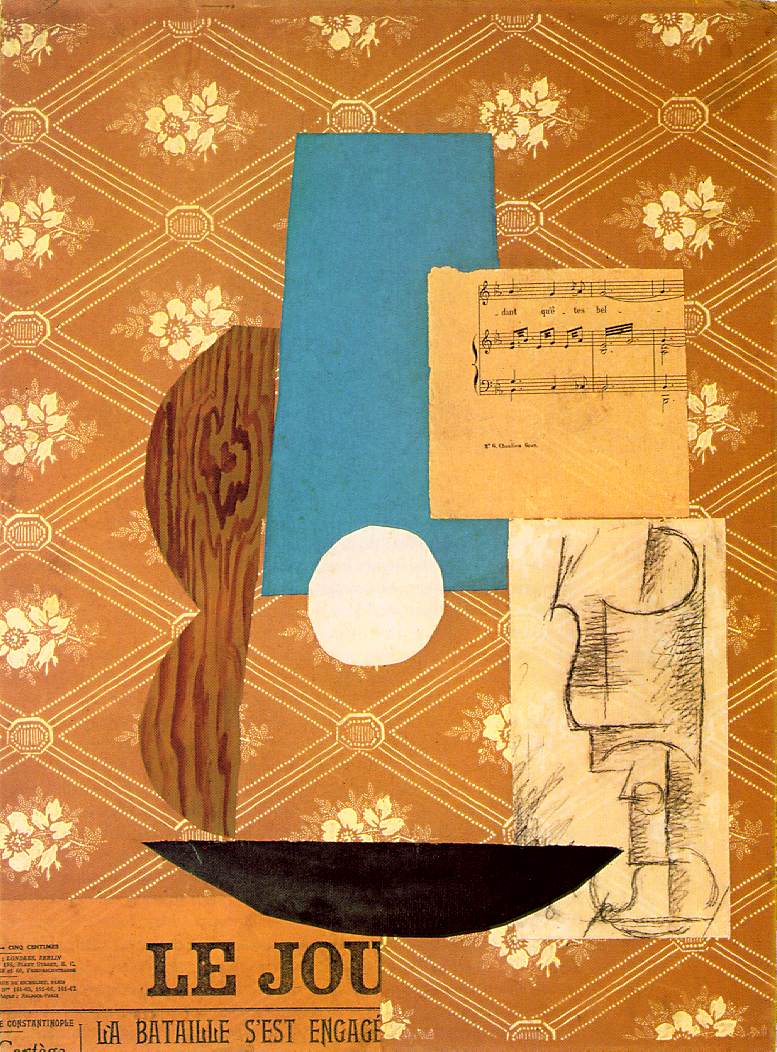 Guitar, Sheet music and Wine glass – Pablo Picasso, 1912
Guitar, Sheet music and Wine glass – Pablo Picasso, 1912
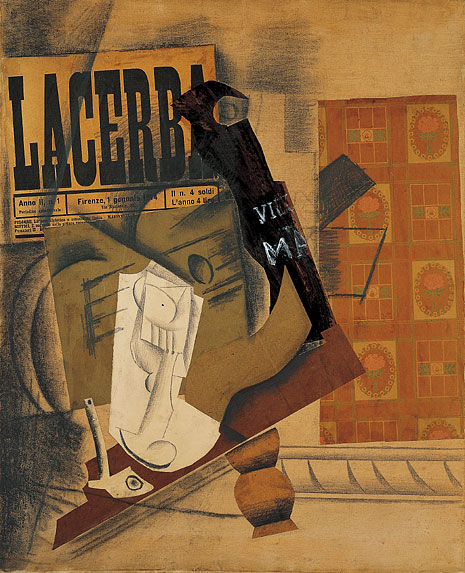 Pipe, Verre, Bouteille de Vieux Marc – Picasso, 1914
Pipe, Verre, Bouteille de Vieux Marc – Picasso, 1914
Graphic designers in the commercial publishing world quickly recognized the forward-looking design potential of cubism and began incorporating it into their work. Before long Cubism was “reabsorbed” by the dominant culture it was commenting on.
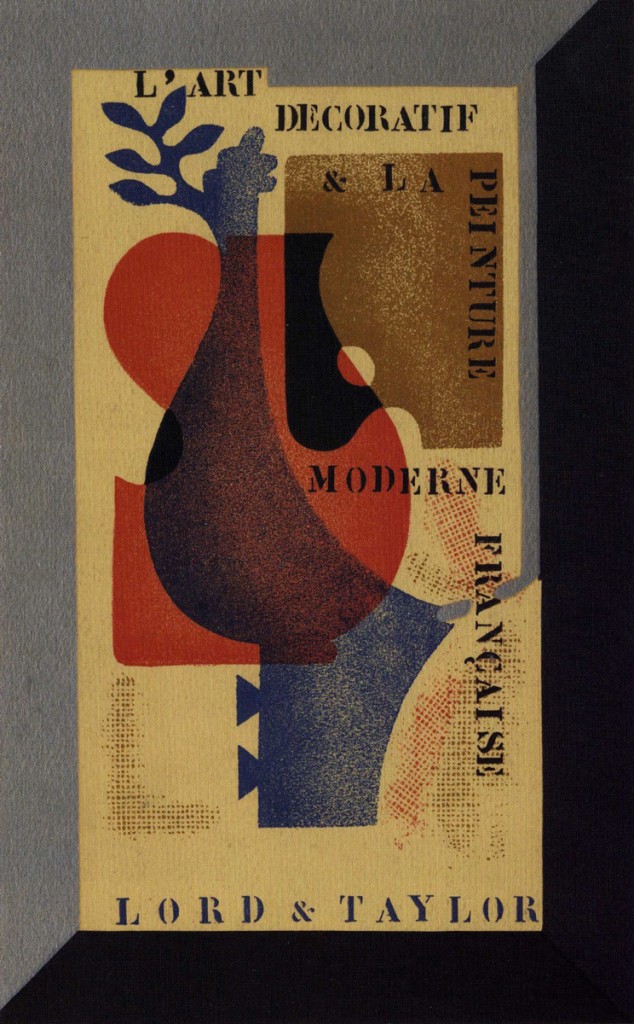 Lord and Taylor ad by Fernand Leger, 1928
Lord and Taylor ad by Fernand Leger, 1928
The Referenced Object: Picasso Discovers African Art
In 1907 Picasso “discovered” African Masks on display at a Paris Museum of Ethnography. These influenced the style of his painting Les Demoiselles d’Avignon, and many subsequent works. The larger cultural context he worked within was one of European colonialization of Africa.
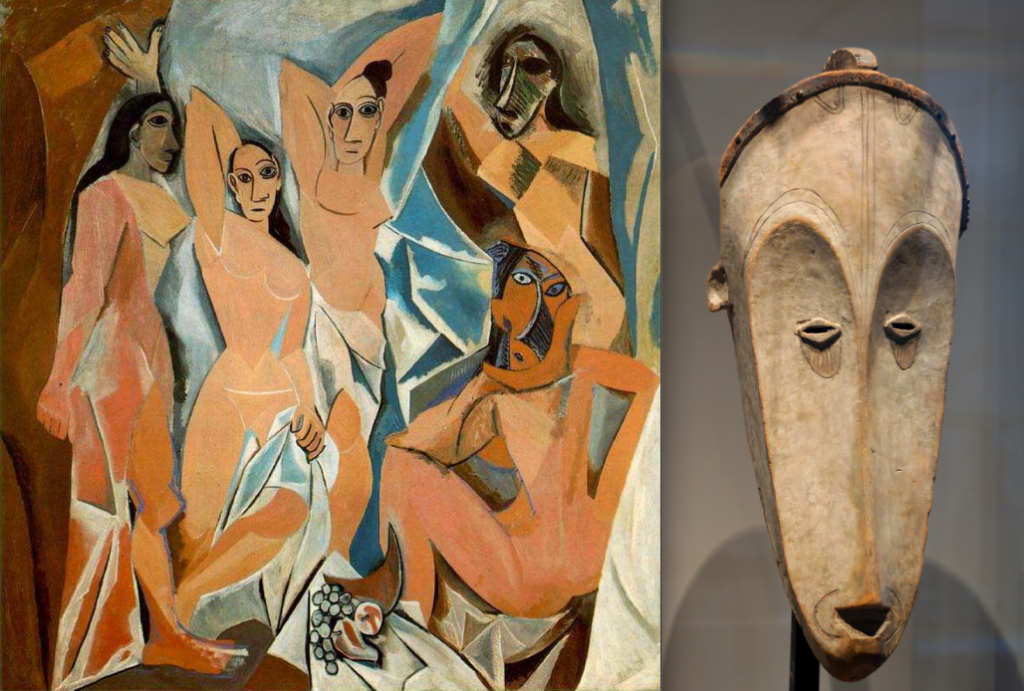 Les Demoiselles d’Avignon Pablo Picasso, 1907
Les Demoiselles d’Avignon Pablo Picasso, 1907
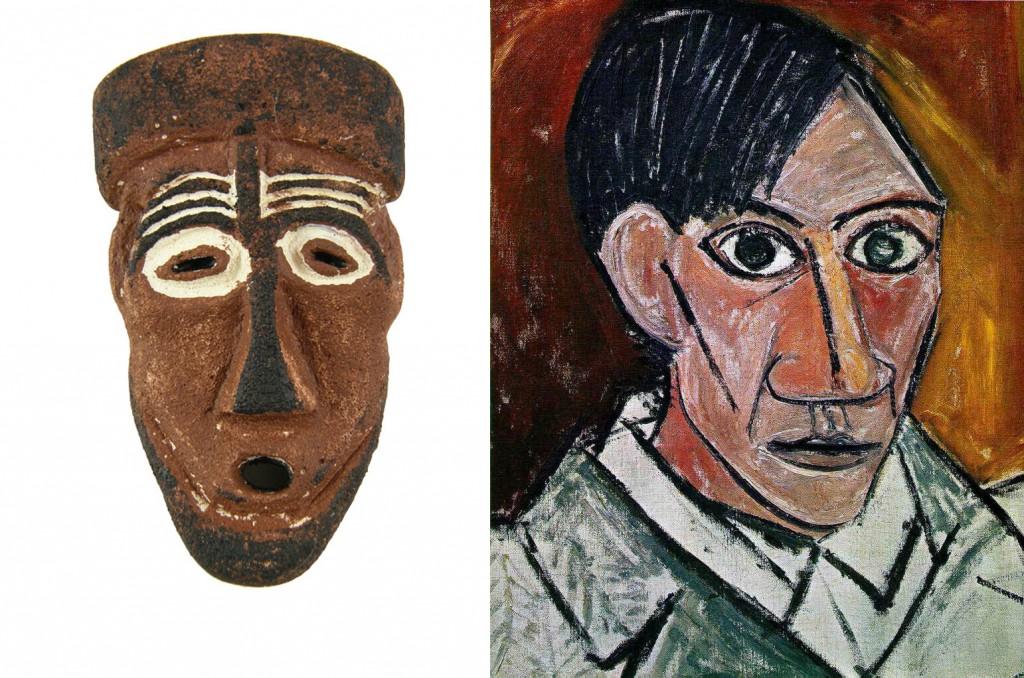
African mask with self-portrait by Picasso, 1907
The “Readymade”
Marcel Duchamp was a pioneer of the French “Dada” movement which questioned long-held assumptions about what art should be, and how it should be made. Duchamp began presenting objects themselves as art. He selected mass-produced utilitarian objects, designating them as art and giving them titles. “Readymades,” as he called them, disrupted centuries of thinking about the artist’s role as a skilled creator of original handmade objects. Instead, Duchamp argued, “An ordinary object could be elevated to the dignity of a work of art by the mere choice of an artist.”
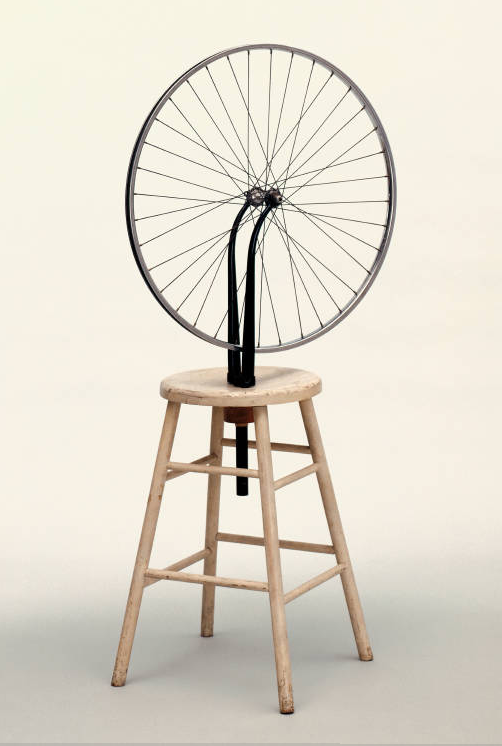 Bicycle Wheel – Duchamp, 1913
Bicycle Wheel – Duchamp, 1913
 Fountain – Macel Duchamp, 1917
Fountain – Macel Duchamp, 1917
 Object – Meret Oppenheim, 1936
Object – Meret Oppenheim, 1936
The Pop Art Conversation
“Pop” artists of the 60’s consciously engaged not only the imagery of consumer culture, but also their techniques of production. Robert Rauschenberg re-used images from the media and silk screened them onto his paintings to create dense and sometimes personal narratives.
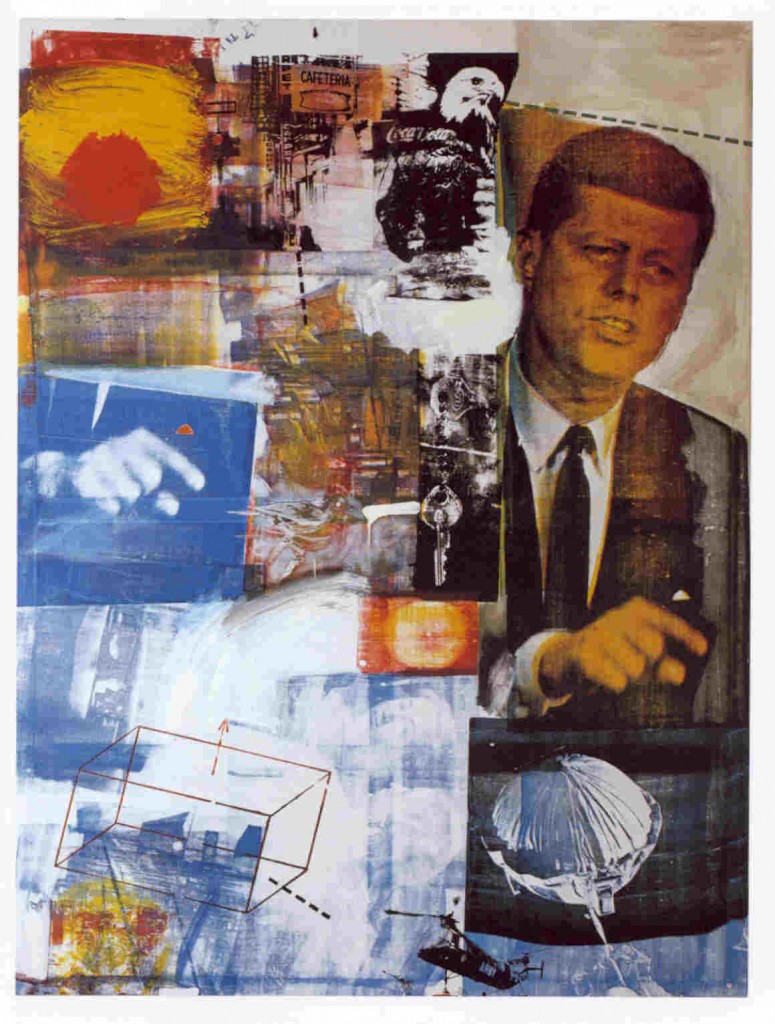
Robert Rauschenberg collage with silk screen
In one infamous example of performative appropriation, Rauschenberg acquired a drawing by well-know American artist Willem DeKooning for the purpose of erasing it. The resulting “erased” drawing, created in 1953, was considered by Rauschenberg to be an early “conceptual” art work.
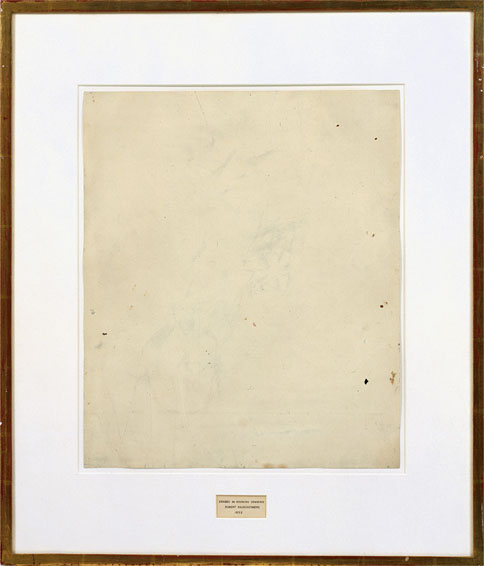 Erased DeKooning, Rauschenberg, 1953
Erased DeKooning, Rauschenberg, 1953
Andy Warhol sought to upend expectations about traditional notions of beauty by celebrating banality.
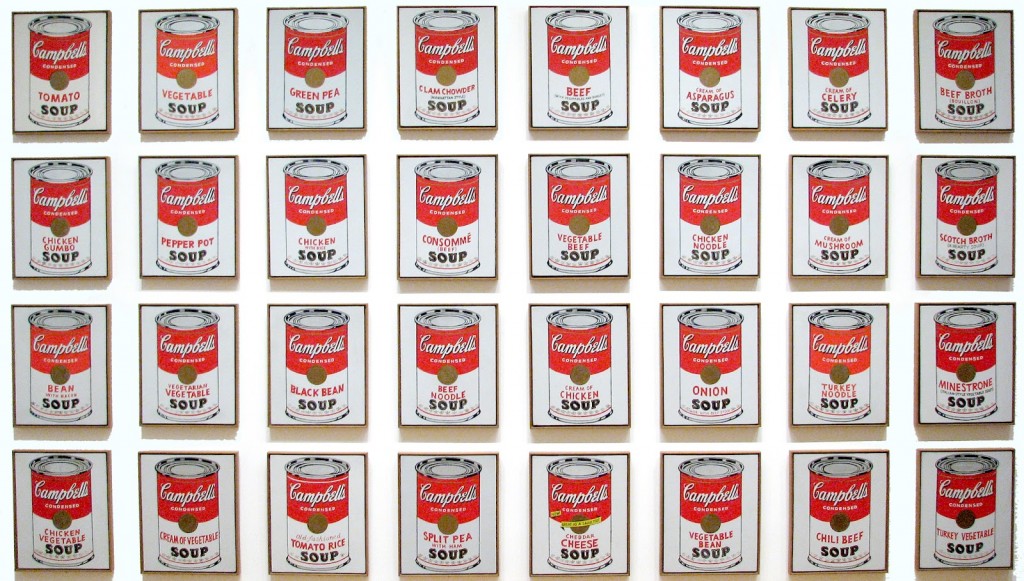 Campbell’s Soup Cans – Andy Warhol, 1962
Campbell’s Soup Cans – Andy Warhol, 1962
Un-ironically, Warhol’s send-up of consumer culture had undeniable commercial appeal. For thirty years, Warhol consciously blurred the distinctions between fine art, fashion and graphic design, openly inviting the commodification of his artwork. It could be argued that it was impossible for Warhol to be considered a “sell out,” since it was the ultimate purpose and function of much of his creative output to comment on, and participate in image consumption.
It was no surprise then, that 50 years after he created the original soup cans painting, Campbell’s produced a limited-edition series of “Warhol” lables for their signature tomato Soup.
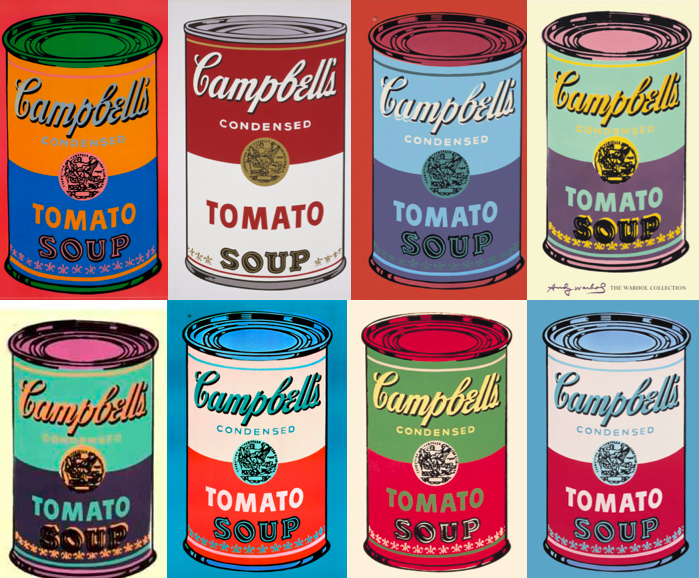
Limited-edition Campbell’s soup can lables commemorating 50th anniversary of Warhols’ original series
Warhol was also the first artist to be openly obsessed with celebrity culture, and also to make art about it. Again, he simultaneously critiqued that culture while also actively participating in it. He famously coined the phrase “In the future everyone will be famous for 15 minutes,” but even this was an appropriation, as it was something Warhol overheard a photographer say at one of his public appearances where people were clamoring to have their pictures taken with him.
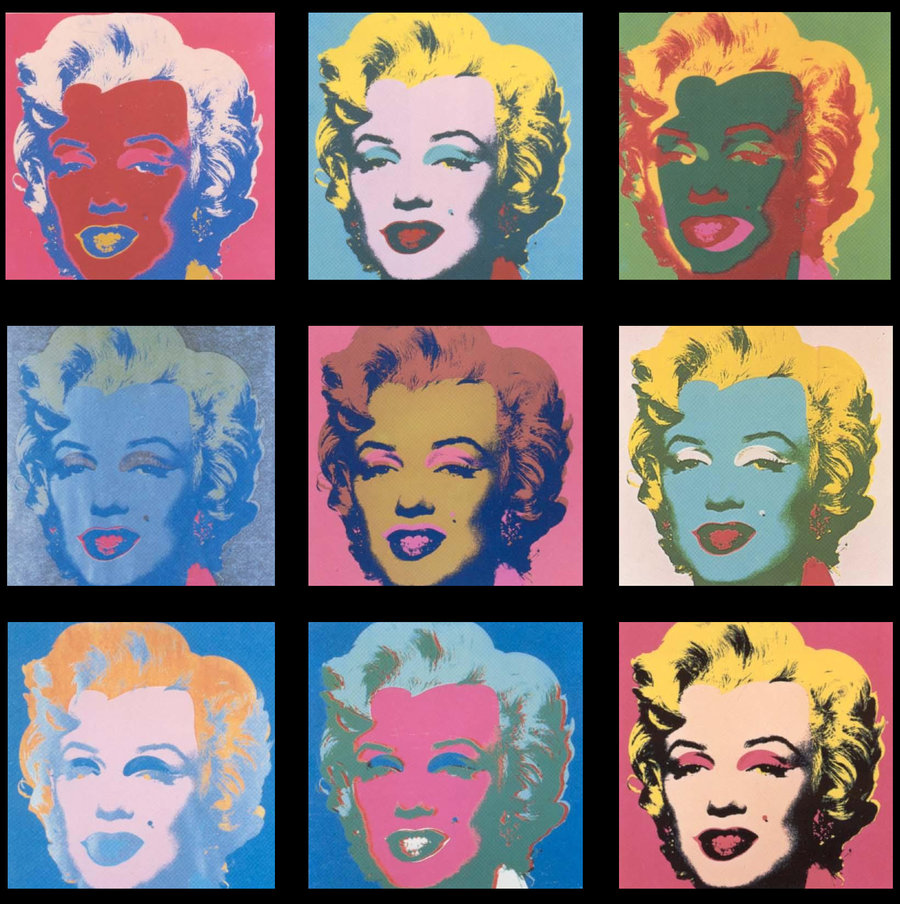 Marylin Monroe – Andy Warhol, 1962
Marylin Monroe – Andy Warhol, 1962
Andy Warhol aggressively engaged popular culture as subject matter, and he helped define the role of artist-as-instigator/provocateur in the early post-modern era. It’s no surprise then, that the “look and feel” of his artwork has emblematic power for subsequent generations and has set the tone for yet more rounds of appropriation by anonymous members of popular culture in the internet era.
 “Warholized” Justin Bieber – anonymous
“Warholized” Justin Bieber – anonymous
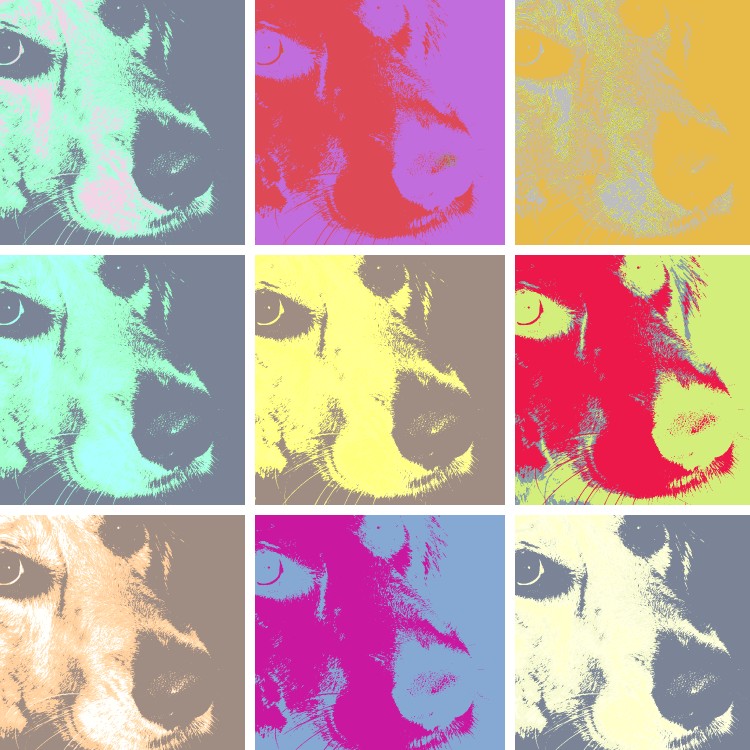 “Warhol-izer” camera-phone app
“Warhol-izer” camera-phone app
Post Modern Proliferations
Sherrie Levine
Sherrie Levine is considered an “appropriation artist,” and has devoted most of her mature creative output to photographically reproducing the work of other famous artists. Her most controversial body of work consists of famous Walker Evans photographs, rephotographed by Levine out of an Evans exhibition catalog, and then presented as Levine’s artwork with no manipulation of the images. Levine attempts to question the complex values associated with our ideas of originality. Her work also speaks to a perceived inability to recapture the past, and to our own lost illusions.
 After Walker Evans, Sherrie Levine, 1980
After Walker Evans, Sherrie Levine, 1980
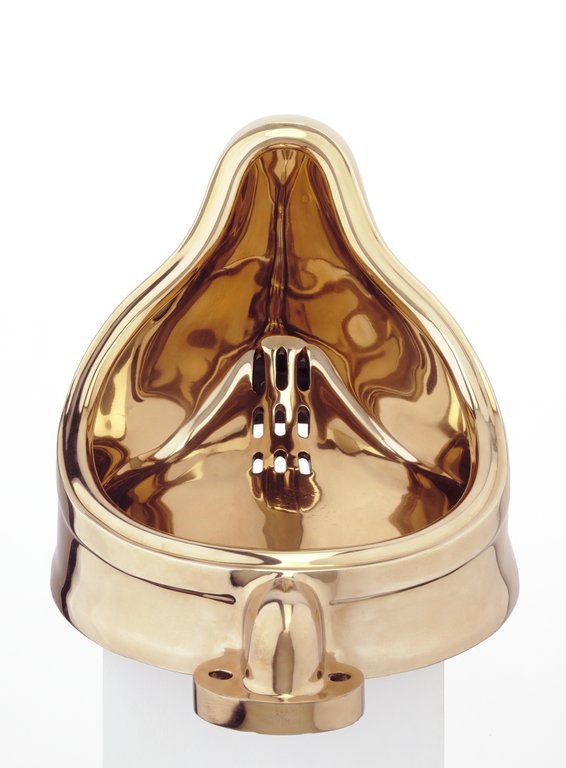
Fountain (after Marcel Duchamp: A.P.) – Sherrie Levine, 1991
Barbara Kruger
With a background as a graphic designer for Condé Nast publishing, Barbara Kruger embraced both the imagery and language of advertising in her work, combining black and white photographs with ambiguous but accusatory statements in collage-like presentations. Her work is often staged in highly public, non-gallery settings to heighten its confrontational stance. Kruger’s work rejects the values of commercial advertising by raising questions about gender equality, consumerism, and stereotypes.
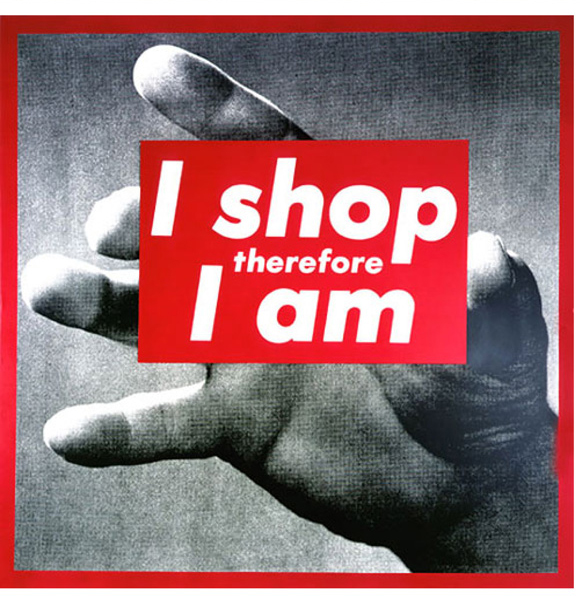
I shop – Kruger, 1987
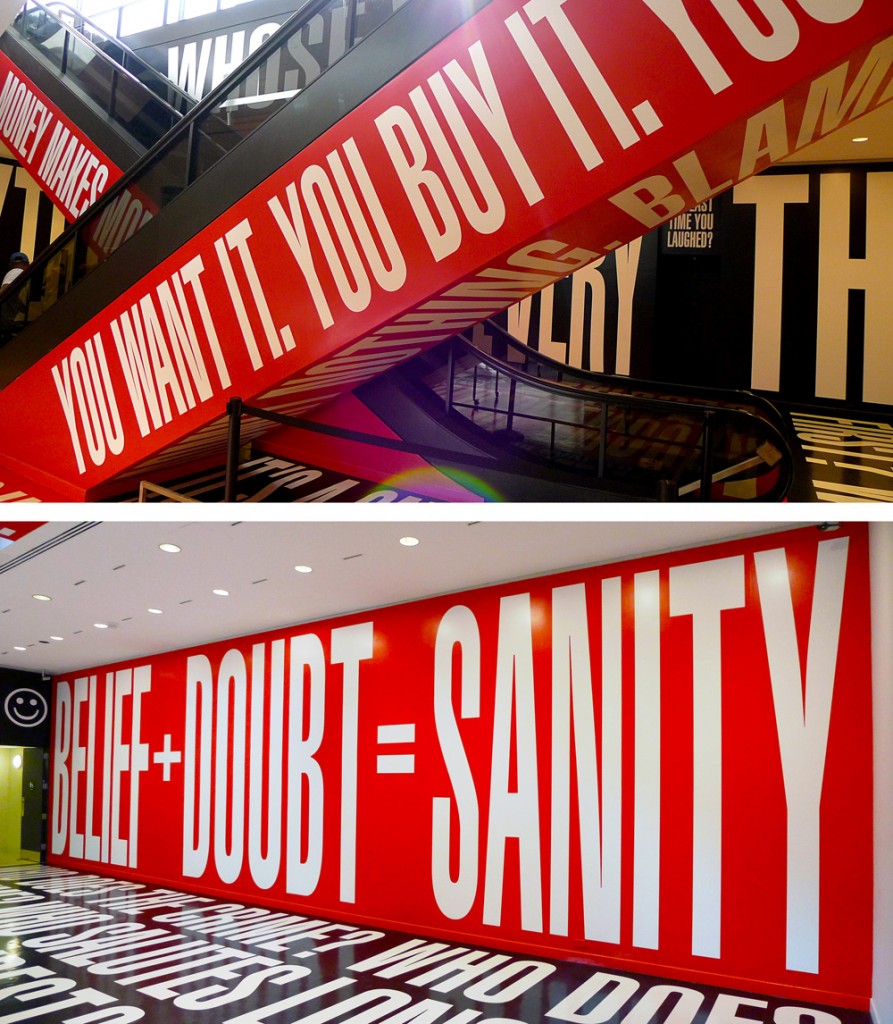 Belief and Doubt Installation – Brabara Kruger, 2012
Belief and Doubt Installation – Brabara Kruger, 2012
Shepard Fairey
In 1989 Shepard Fairey, an illustration student at the Rhode Island School of Design, printed an image of professional wrestler Andre the Giant, with the absurd claim that he had a posse, on a sticker and began placing it around Providence, RI. By 1994, it had become a popular street symbol and could be seen along the east coast.
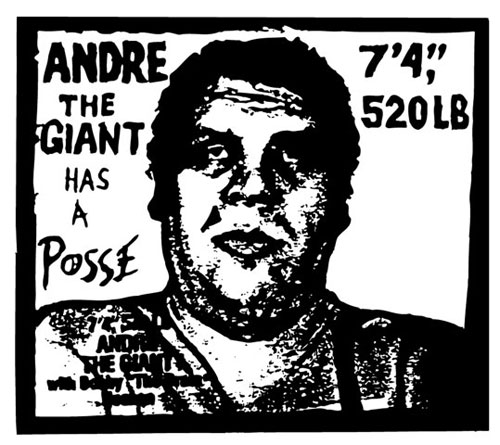 Shepard Fairey – Andre the Giant sticker 1989
Shepard Fairey – Andre the Giant sticker 1989
When Titan Sports, then the parent company of the World Wrestling Foundation, threatened a copyright infringement lawsuit, Fairey adjusted the art. He appropriated Barbara Kruger’s typographic style, the ominous “Obey” command, and combined them with a simplified image of André the Giant.
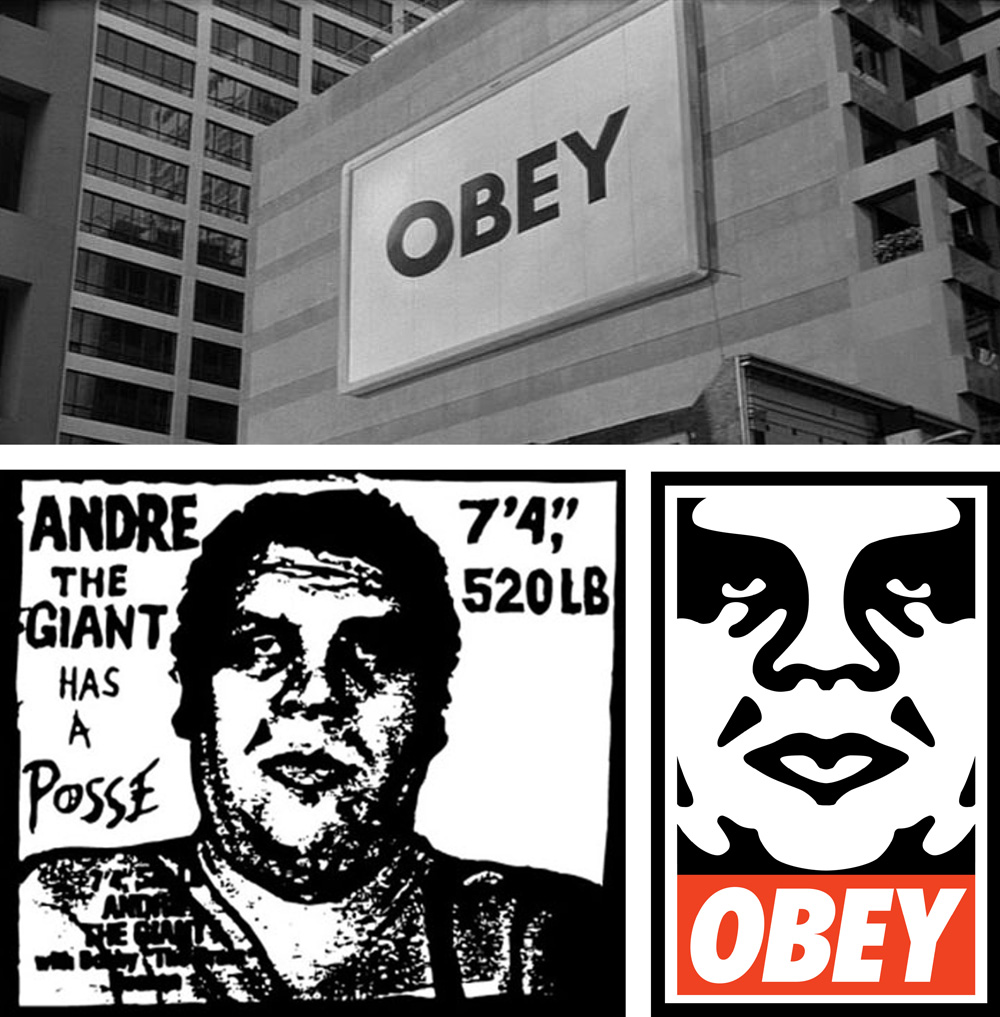
No stranger to controversy, Shepard Fairey was famously sued by an AP photographer for unauthorized use of one of his images for the 2008 Obama presidential campaign image.
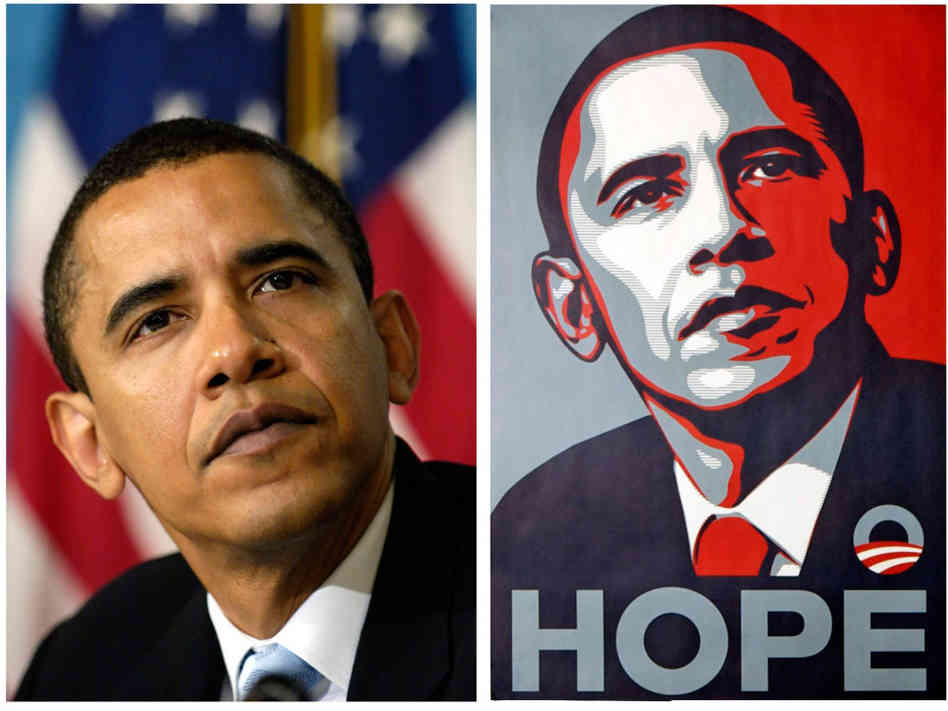
Mannie Garcia/ Shepard Fairey
Being a high-profile artist who routinely “borrows” images from other media sources, Fairey has always been vulnerable to having his work “re-appropriated” by everyone from attackers to people simply trying to riff on his look for utterly mundane purposes.
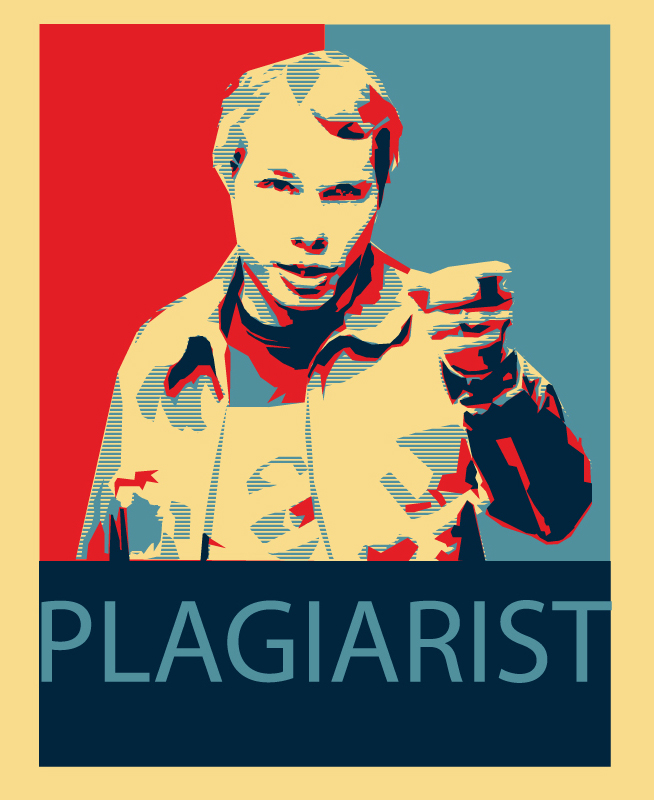 Anonymous
Anonymous
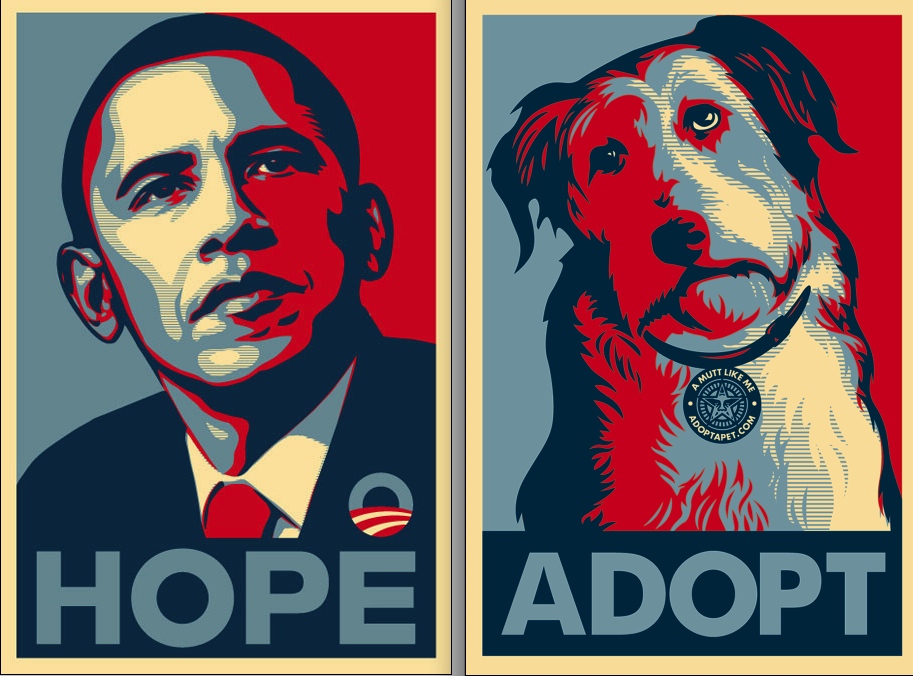
Anonymous
Wayne White
Wayne White takes cheap, mass-produced lithographs which he finds in secondhand thrift stores and painstakingly paints phrases or words on them in a glossy, 3-D style. His work is an intentional melding of cheeky, clever humor with kitsch and vernacular source imagery – a hallmark of the Low Brow art scene.
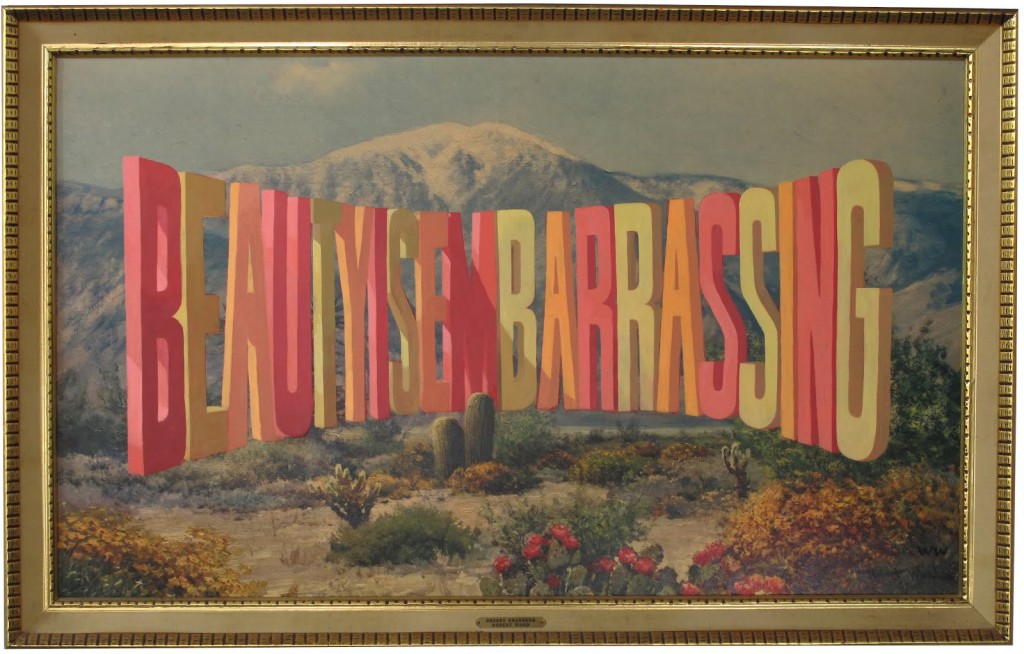 Beauty is Embarrassing – Wayne White, 2004
Beauty is Embarrassing – Wayne White, 2004
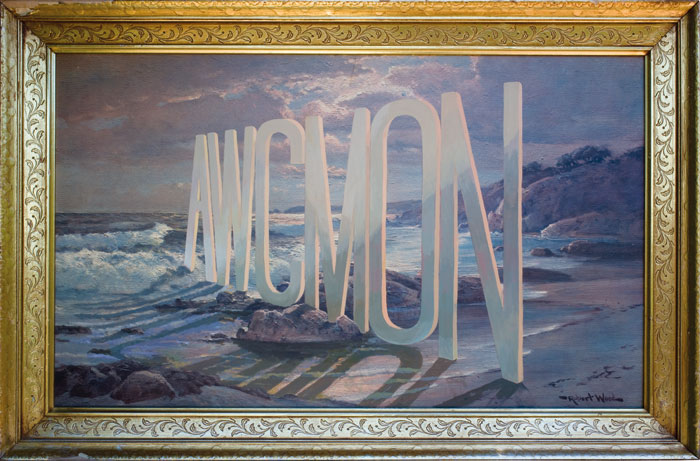 Aw Cmon – Wayne White, 2004
Aw Cmon – Wayne White, 2004
Fair Use
Fair use is a limitation and exception to the exclusive right granted by copyright law to the author of a creative work. In United States copyright law, fair use is a doctrine that permits limited use of copyrighted material without acquiring permission from the rights holders. Examples of fair use include commentary, search engines, criticism, parody, news reporting, research, teaching, library archiving and scholarship. It provides for the legal, unlicensed citation or incorporation of copyrighted material in another author’s work under a four-factor balancing test.
1. the purpose and character of the use, including whether such use is of a commercial nature or is for nonprofit educational purposes;
2. the nature of the copyrighted work;
3. the amount and substantiality of the portion used in relation to the copyrighted work as a whole; and
4. the effect of the use upon the potential market for, or value of the copyrighted work.